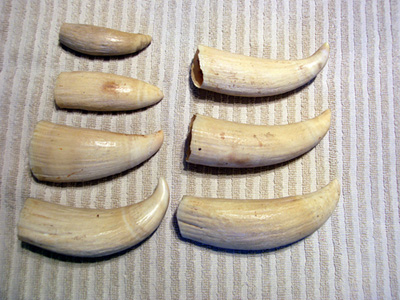When it comes to the animal kingdom, size often matters, and this is particularly true when it comes to teeth. Some animals have evolved to develop extraordinarily large teeth, which serve various purposes in their survival and adaptation to their environments. From gripping prey to breaking through tough materials, these impressive dental structures are a testament to nature's ingenuity. In this article, we will explore the top five animals with the biggest teeth, diving into their characteristics, habitats, and the functions their colossal chompers serve.
The sperm whale is not only the largest toothed predator on the planet but also boasts the largest teeth of any animal. Males can grow up to 20 feet long, and their teeth can weigh as much as 2.5 pounds each. These teeth are primarily located in the lower jaw; the upper jaw has sockets for the lower teeth but doesn’t have any teeth of its own.

Sperm whales use their massive teeth primarily for gripping slippery prey, such as giant squid. Their deep-diving abilities—reaching depths of over 3,000 feet—allow them to hunt in the dark depths of the ocean where few other predators venture. The size and strength of their teeth are crucial for catching and holding onto their prey, making them one of the ocean's most formidable hunters.
While not as widely known as the sperm whale, the Narasimha, or the bull shark, is another contender for having some of the largest teeth in the animal kingdom. These sharks can reach lengths of up to 11 feet and possess rows of sharp, serrated teeth that can grow up to 3 inches long.
The bull shark's teeth are designed for slicing through flesh. Their unique adaptations allow them to thrive in both salt and freshwater, giving them access to diverse ecosystems where they are apex predators. The size and structure of their teeth enable them to take down a variety of prey, from fish to larger mammals, solidifying their position at the top of the food chain.
Elephants are known for their immense size, but they also possess some of the largest teeth in the animal kingdom. An adult elephant's tusks can grow up to 10 feet long and weigh as much as 200 pounds. These tusks are essentially elongated incisor teeth and play a significant role in the elephant's daily life.
Elephants use their tusks for various purposes, including digging for water, stripping bark from trees, and defending themselves against predators. The sheer size of their tusks makes them a vital tool for survival in their often harsh environments. Additionally, tusks are used in social interactions, with Elephants-Are-Endangered.html">elephants demonstrating dominance or asserting hierarchy among their groups.
Walruses are easily recognizable thanks to their long tusks, which can grow up to 3 feet in length. These tusks are actually elongated canine teeth, and both male and female walruses possess them. Their tusks serve several important functions, including helping walruses haul themselves onto ice, establish dominance, and defend against predators.
In addition to their impressive tusks, walruses have strong, flat teeth that are ideal for crushing the hard shells of mollusks, their primary food source. The size of their teeth enables them to thrive in the icy waters of the Arctic, showcasing the adaptations that have allowed them to survive in such a challenging environment.
The great white shark is perhaps one of the most iconic predators of the sea, known for its powerful build and formidable bite. Great whites possess rows of sharp, triangular teeth that can measure up to 3 inches in length. These teeth are continuously replaced throughout the shark's life, ensuring that they always have a fresh set of cutting tools at their disposal.
The primary function of a great white's teeth is to capture and consume prey, which includes seals, fish, and even other sharks. Their serrated edges allow them to efficiently tear through flesh, making each bite a lethal one. The size and sharpness of their teeth are essential for their survival, enabling them to dominate their marine environments.
The animal kingdom is filled with fascinating adaptations, and teeth are among the most striking features that illustrate the diversity of life on Earth. From the massive tusks of elephants to the sharp, serrated teeth of great white sharks, these animals have developed unique dental structures that play crucial roles in their survival.
Understanding the size and function of these teeth not only highlights the incredible adaptations of these creatures but also underscores the importance of preserving their habitats. As we continue to explore the wonders of nature, let us appreciate the remarkable ways in which animals have evolved to thrive in their environments. Whether it's the deep-sea hunts of sperm whales or the social interactions of elephants, the teeth of these animals tell a story of life, survival, and the intricate balance of ecosystems.
In summary, the fascinating world of animal teeth is a reminder of the beauty and complexity of nature. These top five animals with the biggest teeth showcase how evolution has shaped their lives and the roles they play within their ecosystems. Understanding these creatures helps us appreciate the intricate web of life that surrounds us.
animal tags: teeth
We created this article in conjunction with AI technology, then made sure it was fact-checked and edited by a Animals Top editor.